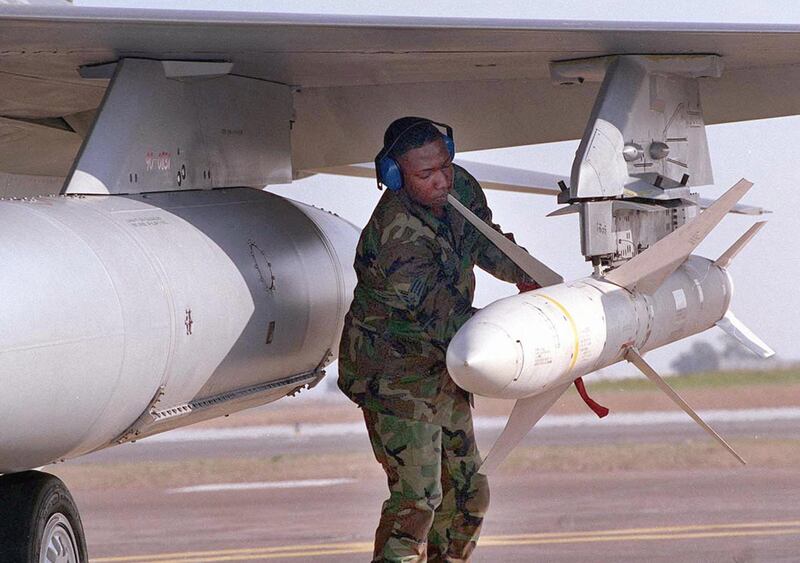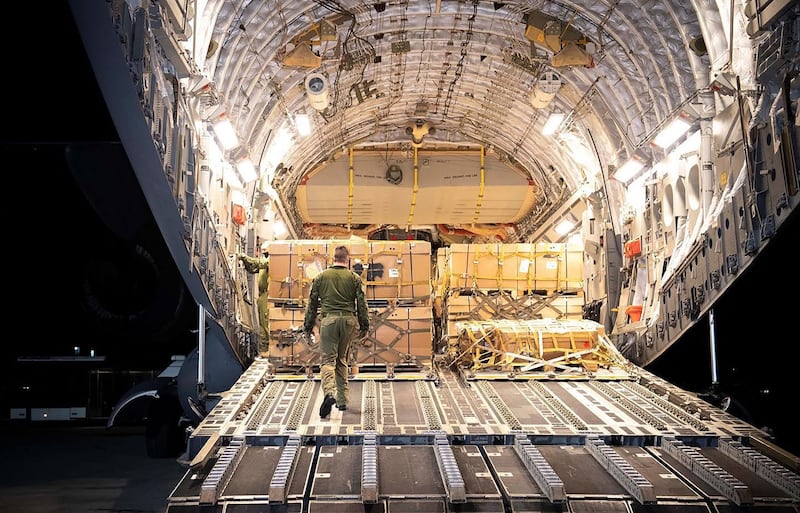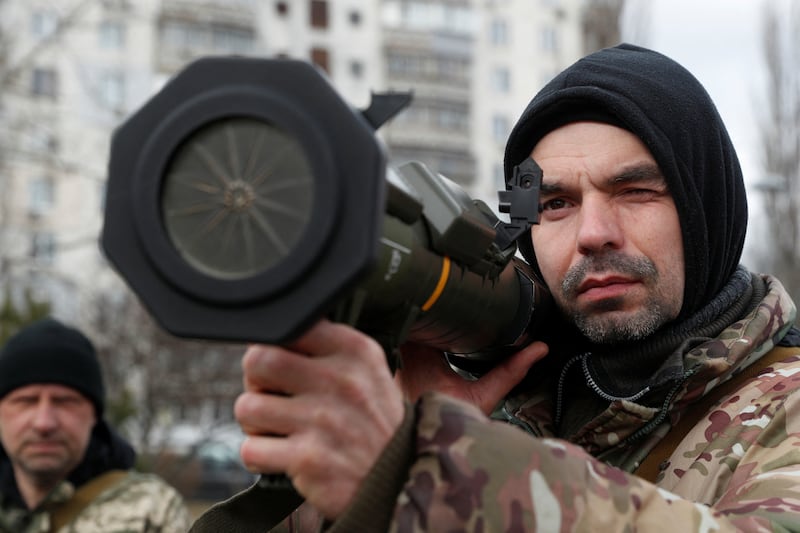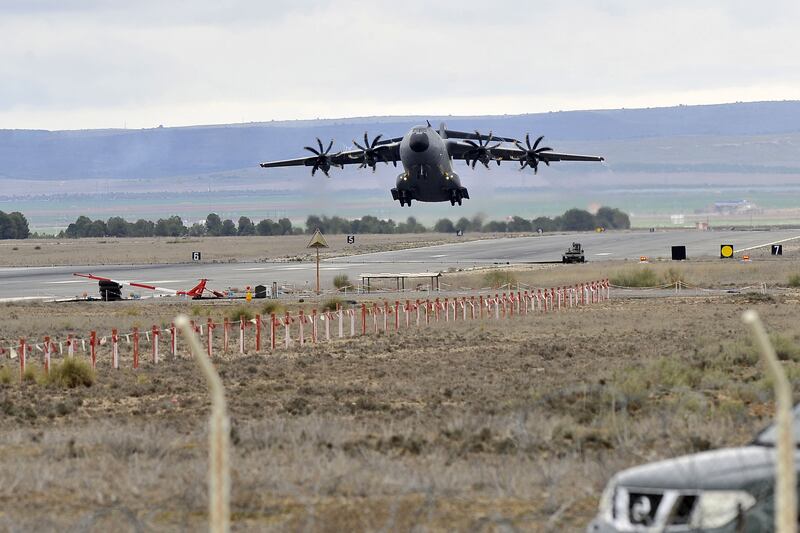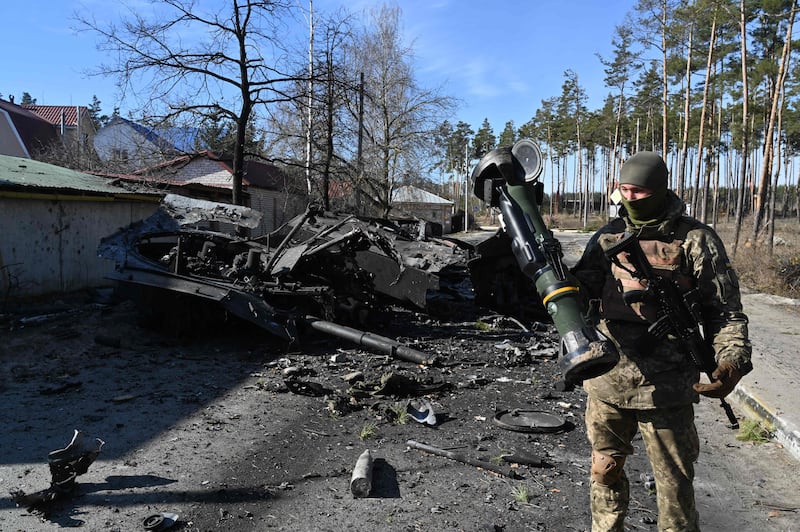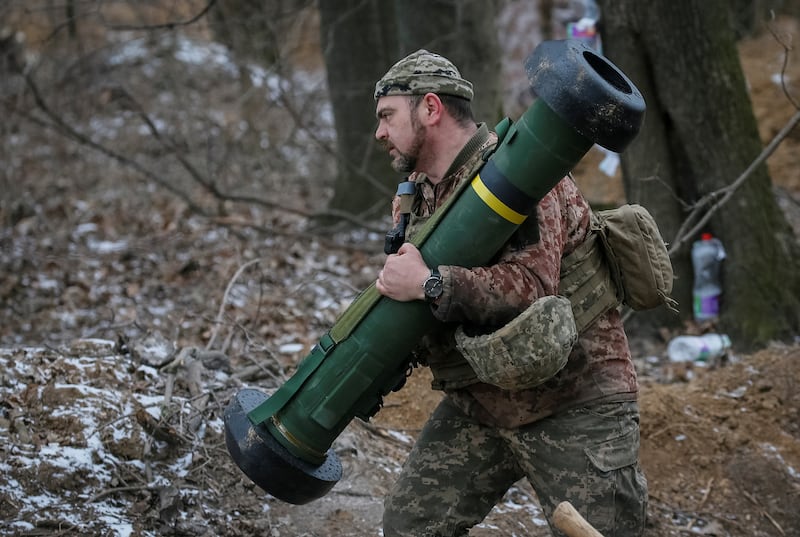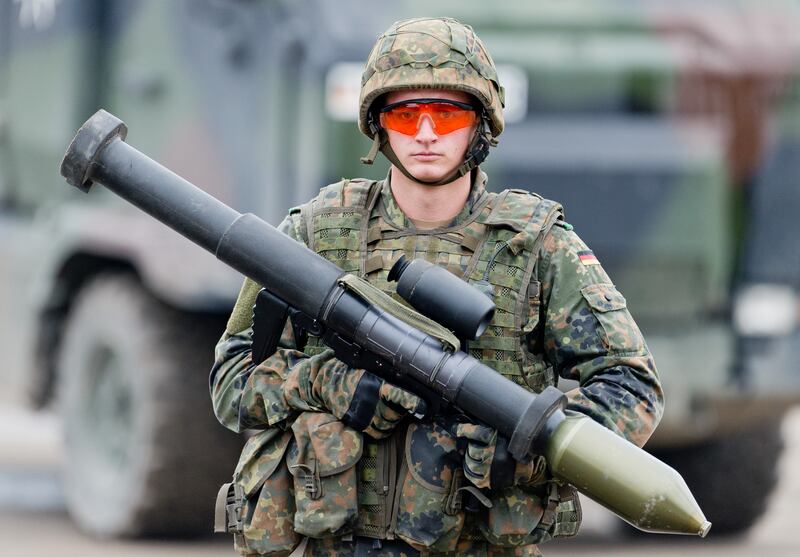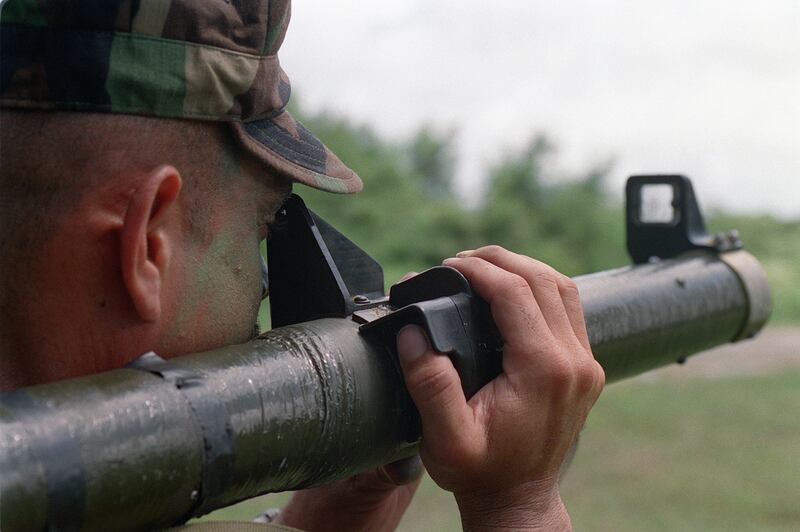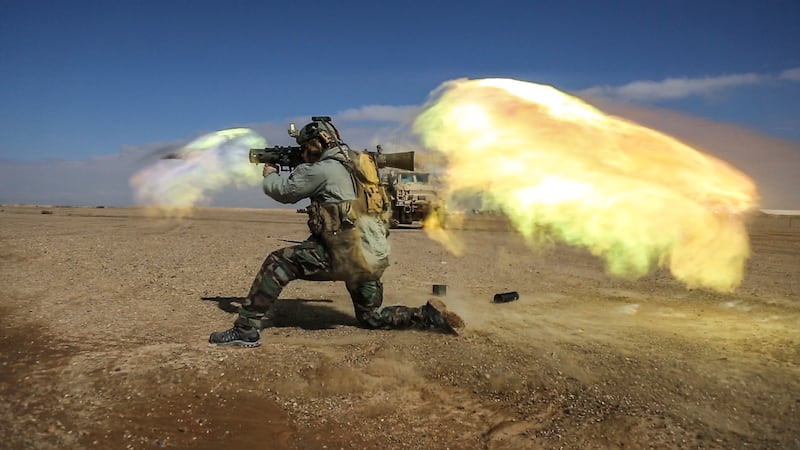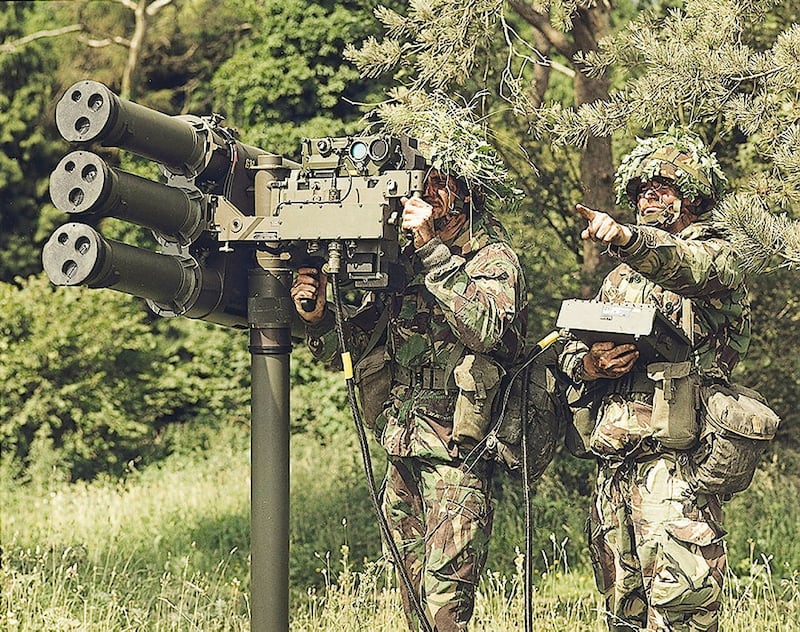The US on Monday announced it has sent AGM-88 Harm missiles to Ukraine, designed to track and destroy radar systems — a move that could significantly boost countermeasures against Russian air defences.
Analysts have yet to determine exactly how Ukraine has used the weapon, designed to be mounted on US aircraft, as the Ukrainian air force inventory still comprises planes designed in the Soviet-era.
While a number of systems supplied to the Ukrainians are so new as to have never been used in combat, such as the NLAW anti-tank missiles supplied by the UK or Switchblade explosive drones supplied by the US, the Harm (high-speed anti-radiation missile) entered service in 1985.
The purpose of the weapon, say designers Raytheon, is to “suppress or destroy surface-to-air missile radar and radar-directed air defence artillery systems”.
It does this by identifying enemy radar signals and riding their radar beams to the target at nearly 2,300 kilometres per hour — turning the hunter into the hunted.
One of the fastest air-to-surface missiles in operation, the AGM-88, can cover 40 kilometres per minute, giving enemy air defences little time to react at distances of up to 110 kilometres, its maximum range.
It is worth noting that speed is not necessarily the winning factor — the US has invested heavily in slower, stealthy missiles to combat enemy air defences at much longer range. Such missiles, including the JASSM, were also not designed to be used with Soviet-era aircraft.
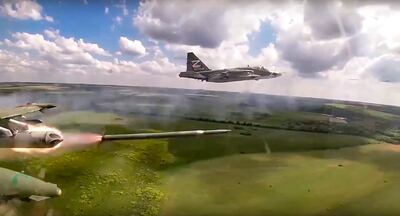
Russia has also fielded a similar missile to the AGM-88, the Kh-31P, which has a similar range and manufacturer Rosoboronexport says is “designed to destroy medium and long-range surface-to-air systems’ radars, air operations control radars and early warning radars”.
First used in 1986 during US bombing raids in Libya, the AGM-88 was used against Soviet-supplied defence systems, destroying a dozen missile batteries during the US Operation El Dorado Canyon against former dictator Muammar Qaddafi’s forces.
Can Russia defend against the Harm?
One tactic air defence systems use to avoid detection is to move quickly from one location to another and temporarily deactivate radar systems, the US military says, an approach simply known as the “switch off”.
Recent variants of the Harm, such as the AGM-88E, can defeat the switch-off approach provided they have located the enemy radar first — in this case, the AGM-88E can continue to the co-ordinates of the enemy air defence system, a capability known as “counter shutdown”.
A war of attrition
In this tactical game of cat and mouse, Russia may be able to count on absorbing higher losses than the Ukrainians.
As the conflict increasingly becomes a war of attrition where both sides seek to exhaust the enemy, Russia has sent more Buk air defence systems, according to a recent assessment by the US think tank the Institute for the Study of War.
This would add to a significant inventory of surface-to-air systems.
Russia began the conflict with an estimated 350 Buk missile launchers ― each highly capable against Ukrainian jets ― and as many as 800 S-300 launchers and the newer S-400, of which Moscow claims to have more than 200.

The last two systems have caused considerable debate among western military analysts as to whether Russia could create a “Anti-Access Area Denial” strategy, or A2AD, preventing Nato forces from entering air space near Russia.
For Ukraine, which has a far smaller air force than anything Nato can deploy, an A2AD strategy encroaching on Ukrainian territory would present a huge challenge, provided Russia can find enough trained system crews.
Russia will likely avoid deploying most of this arsenal in the conflict, holding some anti-aircraft missile batteries back to defend territory such as Kaliningrad, its territory on the Baltic coast where some S-400s are based.
Considering this, Ukraine probably faces a long war before it can degrade Russian air defences.
The analysts Stijn Mitzer and Jakub Janovsky, who have tracked Russia’s military losses since the start of the conflict on the Oryx blog, say the invasion force has lost 13 radar systems and nearly 70 surface-to-air missile systems — a fraction of its initial inventory.
